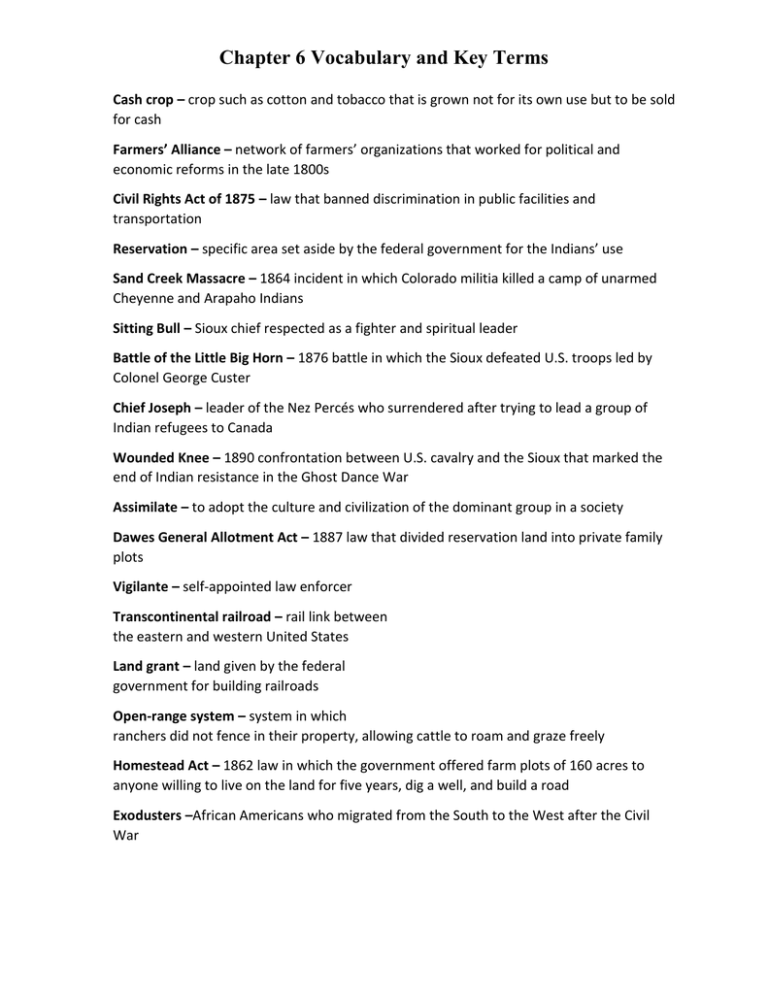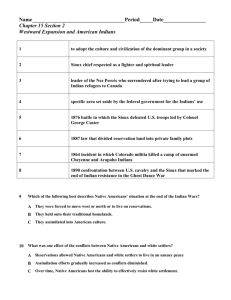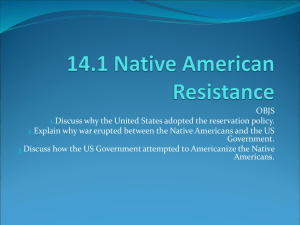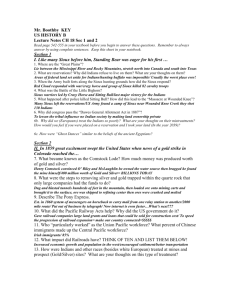Chapter 6 - Vocabulary and Key Terms
advertisement

Chapter 6 Vocabulary and Key Terms Cash crop – crop such as cotton and tobacco that is grown not for its own use but to be sold for cash Farmers’ Alliance – network of farmers’ organizations that worked for political and economic reforms in the late 1800s Civil Rights Act of 1875 – law that banned discrimination in public facilities and transportation Reservation – specific area set aside by the federal government for the Indians’ use Sand Creek Massacre – 1864 incident in which Colorado militia killed a camp of unarmed Cheyenne and Arapaho Indians Sitting Bull – Sioux chief respected as a fighter and spiritual leader Battle of the Little Big Horn – 1876 battle in which the Sioux defeated U.S. troops led by Colonel George Custer Chief Joseph – leader of the Nez Percés who surrendered after trying to lead a group of Indian refugees to Canada Wounded Knee – 1890 confrontation between U.S. cavalry and the Sioux that marked the end of Indian resistance in the Ghost Dance War Assimilate – to adopt the culture and civilization of the dominant group in a society Dawes General Allotment Act – 1887 law that divided reservation land into private family plots Vigilante – self-appointed law enforcer Transcontinental railroad – rail link between the eastern and western United States Land grant – land given by the federal government for building railroads Open-range system – system in which ranchers did not fence in their property, allowing cattle to roam and graze freely Homestead Act – 1862 law in which the government offered farm plots of 160 acres to anyone willing to live on the land for five years, dig a well, and build a road Exodusters –African Americans who migrated from the South to the West after the Civil War











